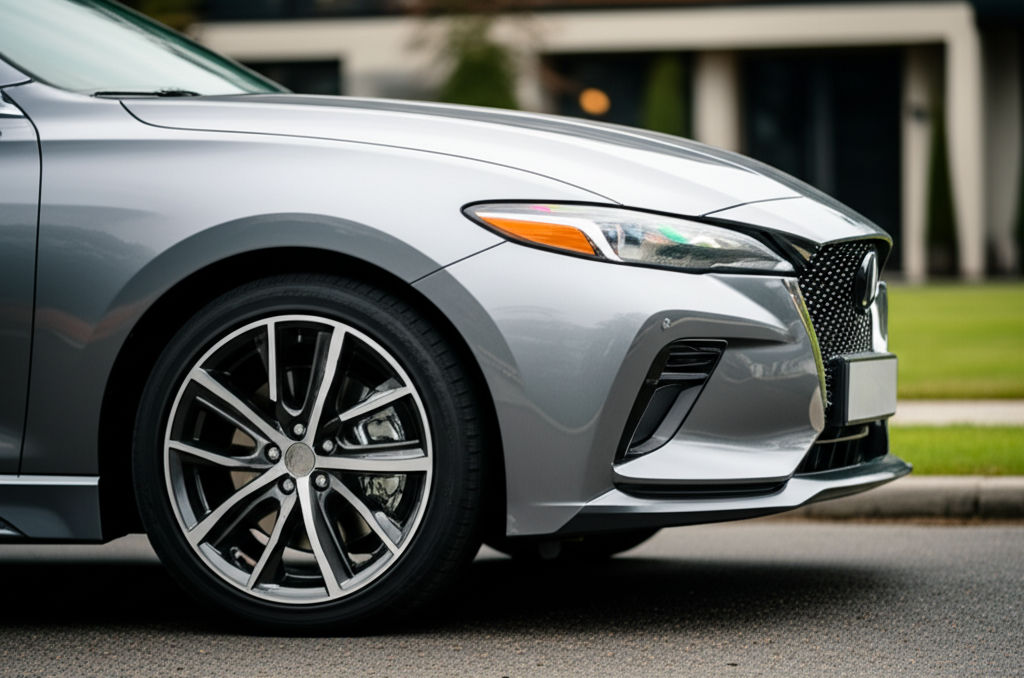Aviation Insurance: Coverage Options Explained
Ellie Moore

Photo: Aviation Insurance: Coverage Options Explained
Aviation Insurance: Coverage Options Explained
Aviation insurance is a crucial aspect of the aviation industry, providing protection for aircraft owners, operators, and passengers. Whether you're a private pilot flying for leisure or a commercial airline operating at a global scale, understanding the various coverage options available is essential. In this comprehensive guide, we'll explore aviation insurance in detail, explain the different types of coverage, and provide actionable insights to help you choose the best policy for your needs.
What Is Aviation Insurance?
Aviation insurance is a specialized form of insurance that covers aircraft operations, including damage to the aircraft, liability for injuries to passengers or crew, and other related risks. It helps mitigate the financial impact of accidents, property damage, or third-party claims, making it a vital consideration for anyone involved in aviation. This insurance covers everything from small private planes to large commercial jets.
Whether you are a pilot, an aircraft owner, or an airline operator, knowing the ins and outs of aviation insurance will help you make informed decisions about the protection you need.
The Importance of Aviation Insurance
Aviation insurance offers peace of mind in an industry where risks are ever-present. Aircraft are valuable assets, and the costs of repair or replacement after an accident can be astronomical. In addition, aviation accidents can cause injuries to passengers, crew, or third parties on the ground. Without proper coverage, these costs could result in significant financial loss.
Aviation insurance also covers legal liability for injuries caused to others, including passengers, other pilots, or third parties. The specialized nature of aviation makes general insurance policies inadequate for aviation-related risks. Therefore, aviation insurance is designed to address these unique needs.
Types of Aviation Insurance Coverage
There are several types of aviation insurance, each designed to cover specific aspects of aviation-related risks. Below, we break down the most common types of aviation insurance coverage.
1. Hull Insurance
Hull insurance protects against damage to the aircraft itself. This coverage typically includes damage caused by accidents, collisions, weather events, or other perils. Hull insurance can be broken down into two main categories:
- All-Risk Hull Coverage: This provides comprehensive protection against any damage to the aircraft, except in cases of specific exclusions (e.g., wear and tear, mechanical failure).
- Named Perils Hull Coverage: This provides coverage only for specific types of damage listed in the policy, such as crashes, fire, or theft.
2. Liability Insurance
Liability insurance is designed to protect the aircraft owner or operator from financial responsibility in the event of an accident that causes injury or damage to others. It covers:
- Bodily Injury Liability: This protects against legal claims arising from injuries sustained by passengers, crew members, or third parties during a flight.
- Property Damage Liability: This covers damage caused to other people's property, including buildings, vehicles, or other aircraft.
Liability insurance is often a requirement for commercial aviation operators and is highly recommended for private aircraft owners.
3. Passenger Liability Insurance
Passenger liability insurance is a subcategory of liability coverage. It specifically protects against claims resulting from injuries or fatalities to passengers on board the aircraft. This coverage is often mandatory for commercial aircraft but is also a good idea for private aircraft owners, especially if they frequently carry passengers.
4. Ground Risk Hull Insurance
Ground risk hull insurance covers damage to the aircraft when it's on the ground. This includes coverage for accidents that occur during takeoff, landing, or while the aircraft is parked. This coverage is essential for protecting your aircraft during non-flight activities, such as taxiing, maintenance, or storage.
5. In-Flight Insurance
In-flight insurance covers the aircraft while it's actively in flight, protecting against accidents, collisions, or other incidents that may occur during the flight. This coverage is a key component of any aviation insurance policy, especially for commercial and private pilots who are regularly airborne.
6. Avionics and Equipment Insurance
This type of insurance covers the aircraft's avionics and other onboard equipment. Avionics insurance is essential because modern aircraft rely heavily on electronic systems for navigation and communication. If these systems are damaged or malfunction, repairs can be costly. Avionics and equipment insurance ensures that these critical components are covered.
7. Pilots' and Crew Insurance
Pilots' and crew insurance covers the crew members operating the aircraft, including the pilot and flight attendants. This coverage is essential for commercial airlines and businesses operating multiple aircraft. It typically includes protection for injuries sustained during the operation of the aircraft, medical expenses, and even life insurance in case of a fatal accident.
Choosing the Right Aviation Insurance Policy
Selecting the right aviation insurance policy depends on several factors, including the type of aircraft, the level of risk involved, and your budget. Here are some actionable steps to help you make the best decision for your needs:
Step 1: Assess Your Needs
Before you start looking for aviation insurance, it's essential to assess your specific needs. Consider the type of aircraft you own or operate, the frequency of use, and the risks associated with your operations. Are you flying a small private plane or a large commercial jet? Do you operate in regions with extreme weather conditions?
Step 2: Compare Coverage Options
Not all aviation insurance policies are created equal. Compare different types of coverage, as well as the exclusions and limitations of each policy. Be sure to ask about the specific risks your aircraft faces, such as weather-related damage, bird strikes, or damage during taxiing.
Step 3: Check the Insurance Provider’s Reputation
The insurance provider you choose should have a strong reputation in the aviation industry. Look for providers with experience in handling aviation-related claims and those who understand the specific challenges faced by aircraft operators. A reputable provider will give you peace of mind knowing your aircraft is covered by experts.
Step 4: Understand the Policy Limits
Aviation insurance policies have coverage limits, so it's important to understand the extent of protection offered. Make sure the coverage limits align with the value of your aircraft and the potential risks you face. If necessary, consider adding supplemental coverage to ensure you're fully protected.
Step 5: Consider Bundling Policies
If you operate multiple aircraft or have other aviation-related insurance needs (e.g., hangar insurance or liability insurance), consider bundling your policies with the same provider. Bundling can often result in discounts and simplify the management of your insurance coverage.
Frequently Asked Questions (FAQs) About Aviation Insurance
1. Is aviation insurance required by law? In many countries, aviation insurance is a legal requirement for commercial aviation operations. Private aircraft owners are not always required by law to have insurance, but it is strongly recommended.
2. How much does aviation insurance cost? The cost of aviation insurance varies widely depending on factors such as the type of aircraft, its value, your flying experience, and the coverage limits. Small, private planes may cost a few thousand dollars per year, while large commercial jets can cost significantly more.
3. Does aviation insurance cover pilot error? Most aviation insurance policies do not cover pilot error unless the pilot is specifically covered under the policy, such as in the case of crew insurance or specialized coverage for pilots.
4. Can I get insurance for experimental aircraft? Yes, experimental aircraft can be insured, but coverage options may be more limited compared to conventional aircraft. It's important to work with an insurer experienced in insuring experimental planes.
Conclusion
Aviation insurance is a critical tool for protecting both aircraft and the people involved in their operation. With a variety of coverage options available, it’s important to carefully consider your specific needs and consult with an experienced insurance provider to ensure that your aircraft is adequately protected. By understanding the different types of coverage and selecting the right policy, you can fly with confidence, knowing that you're prepared for any unforeseen circumstances.
If you found this guide helpful, share it with fellow aviation enthusiasts or operators, and feel free to leave a comment with your thoughts or questions about aviation insurance!
Finance & Investment
View All
April 20, 2025
TSLA Yahoo Finance Stock UpdateElevate your SEO with expert content! Understand E-E-A-T, build topical authority, and create high-quality, trusted content that ranks and engages.
Ellie Moore

November 8, 2025
Capital One Car Finance ReviewUnlock your online potential! Discover how expert SEO content boosts rankings, drives traffic, and establishes your brand as a trusted authority online.
Ellie Moore

August 13, 2025
Should You Get a Masters in FinanceGo beyond keywords! Expert SEO content, built on E-E-A-T, is key to higher rankings, more traffic, and building online authority and trust for your business.
Ellie Moore

August 20, 2025
Track Stocks Easily on Yahoo FinanceUnlock higher rankings & authority with expert SEO content. Learn why valuable, E-E-A-T aligned content is key to online success.
Ellie Moore

January 24, 2025
NYS Finance and Taxation BasicsBeyond keywords: Craft expert SEO content that ranks high, builds E-E-A-T, and genuinely helps your audience. Future-proof your strategy.
Ellie Moore

May 20, 2025
Home Improvement Financing TipsElevate your rankings & build brand trust with expert SEO content. Discover how E-E-A-T principles drive organic traffic and establish authority.
Ellie Moore
Insurance
View AllProtect your future with Premium State Farm Insurance. Explore comprehensive plans for personal & commercial risks, ensuring financial stability and peace of mi...
Ellie Moore
Is pet insurance right for you? Explore the pros, cons, and costs of coverage to keep your furry friend healthy.
Ellie Moore
Discover how insurance companies assess and manage high-risk clients while providing customized solutions for unique challenges.
Ellie Moore
Save on premiums with usage-based auto insurance. Learn how your driving habits shape coverage and costs!
Ellie Moore
Why are millennials delaying life insurance? Explore the trends and factors influencing their decisions.
Ellie Moore
Discover how parametric insurance uses data to quickly respond to natural disasters and protect assets.
Ellie Moore
Education
View AllDiscover how assistive technology empowers special needs learners. Learn about tools that foster inclusivity and enhance educational outcomes.
Read MorePlay is crucial in early learning! Discover how play-based learning enhances cognitive, emotional, and social development in young children.
Read MoreLearn how UNESCO promotes education for all globally. Explore key initiatives and efforts aimed at fostering equal learning opportunities for everyone.
Read MoreExplore the benefits of hybrid learning models. Learn how to balance online and face-to-face teaching for a more flexible education experience.
Read MoreTake learning beyond the textbook with experiential education. Discover how real-world experiences create lasting knowledge and skills.
Read MoreTeacher burnout is on the rise. Learn about its causes, consequences, and practical solutions to support educators and improve well-being.
Read MorePopular Post 🔥
View All
1
2
3
4
5
6
7
8
9
10
Health






Automotive
View All
July 10, 2025
Best Automotive Upholstery Shops Near Me Today
Expert guide: Find the best automotive upholstery shops near you. Restore your car's interior for ultimate comfort, enhanced value, and lasting protection.

July 25, 2025
Drive Automotive Solutions For Everyday Use
Drive smarter & safer! Get essential automotive solutions, maintenance tips & tech insights to keep your car reliable, efficient, and ready for anything.

August 11, 2025
Salesforce Automotive Cloud Learning Path Guide
Accelerate your automotive career! Learn Salesforce Automotive Cloud with our guide to revolutionize operations, unify data, and enhance customer experience.

September 6, 2025
A Better Way Automotive Services Near You
Discover "A Better Way" for auto services. Find trusted mechanics, transparent pricing, and top-tier vehicle care near you. Drive with confidence.

February 12, 2025
Hot Wheels Collecting: Hobby or Smart Investment?
Is collecting Hot Wheels just a hobby, or can it be a smart investment? Learn about rare models, values, and tips to grow your collection.

January 31, 2025
Top Tips for Restoring Classic Cars Like a Pro
Want to restore a classic car? Get expert tips and tricks for a flawless restoration. Discover how to bring vintage beauties back to life!

















